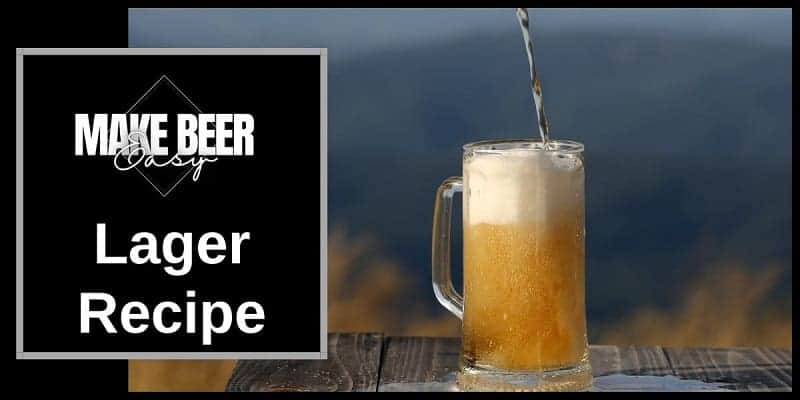The first lager recipe originated in Germany in the 16th century, where it got its name lager or “lagern” in German which means “to store”. Lagern is a direct reference to the traditional brewing process that was used to make lagers, which involved storing the beer in cold caves or cellars for several weeks or even months to allow it to age and ferment, a process now referred to as lagering.
Unlike ales, which are fermented at higher temperatures and have a shorter fermentation time, lagers are fermented at lower temperatures using a lager yeast which is a bottom-fermenting yeast whereas ale yeast is a top-fermenting yeast.
When brewing a lager recipe you will need special equipment to be able to ferment and lager at lower temperatures, most people will use a modified freezer with a temperature regulator such as an ink bird to maintain the temperature. The lower temperatures result in a crisp, clean, and refreshing beer that is enjoyed by countless people around the world.
Lager Style Profile
In terms of style, lagers are known for their light to medium body, golden to amber color, and a moderate to low level of hops. They also tend to have a subtle aroma of malt and a slightly sweet flavor. When it comes to the mouthfeel, lagers tend to be smooth and refreshing, with a slight carbonation that gives them a crisp finish.
As far as pairing lagers with food, they are versatile in that regard and go well with a wide range of meals. They are particularly well-suited for lighter meals such as salads, grilled chicken, and seafood. They are also a great choice for spicy foods, as their crisp and refreshing flavor helps to balance out the heat.
Lager Recipe
The following is a simple but delicious 5-gallon lager recipe…
Original Gravity: 1.044
Final Gravity: 1.008
ABV: 4.76%
IBU: 20
SRM: 3.67
Recipe Ingredients 
7 lbs pale malt (or 6 lbs pale malt extract)
1 lb Munich malt
1 lb Pilsner malt
1 oz Saaz hops (60 mins)
1 oz Hallertauer hops (15 mins)
Lager yeast (such as Wyeast 2007 or Saflager S-23)
Recipe Instructions
Begin by heating 4.5 gallons of water in a large pot.
Once the water is heated, crush the pale malt, Munich malt, and Pilsner malt using a grain mill.
Add the crushed grains (and/or malt extract) to the pot and stir to combine.
Bring the mixture to a boil, then add the Saaz hops. Boil for 60 minutes.
During the last 15 minutes of the boil, add the Hallertauer hops.
After the boil is complete, cool the mixture called wort to around 70 degrees Fahrenheit.
Transfer the wort to a fermenting vessel, such as a carboy, and add the lager yeast.
Allow it to ferment at a temperature between 45-55 degrees Fahrenheit for 2-3 weeks.
Once the fermentation is complete, transfer the beer to a secondary fermenter and let it lager (age) at a temperature between 35-45 degrees Fahrenheit for an additional 4-8 weeks.
After the lagering is complete, transfer it to a keg and force carbonate it or a bottling bucket, then add your priming sugar, bottle it, and carbonate for 1-2 weeks.
Tips For Making a Lager Recipe
Grains – The best grains to use for a lager are pale malt, Munich malt, and Pilsner malt as they provide the right balance of flavor and give it a light golden color.
Hops – When it comes to hops, Saaz and Hallertauer are great choices as they provide the subtle bitterness and a spicy, floral aroma that lagers are known for.
Yeast – Lager yeast is essential for brewing a lager; as this strain of yeast ferments at lower temperatures and produces the lager’s clean and crisp flavor. There are many brands of lager yeasts on the market for you to choose from; some popular options include Wyeast 2007 and Saflager S-23.
Last Call
Brewing up a lager recipe vs an ale is not much different, the big difference comes down to the fermentation temperature and the lagering stage. For the fermenting stage, a cold area in your home such as a basement may suffice. When it comes to the lagering stage a fridge will work as will the freezer with ink bird temperature control we discussed earlier. The hardest part of brewing a lager is having the patience to wait for the lagering stage to finish, however, if you can wait the end result is worth it.
P.S. Want Big Robb’s top 5 favorite recipes? They are yours if you want them, pick them up on the side of the blog or at the bottom if you are on your phone.
